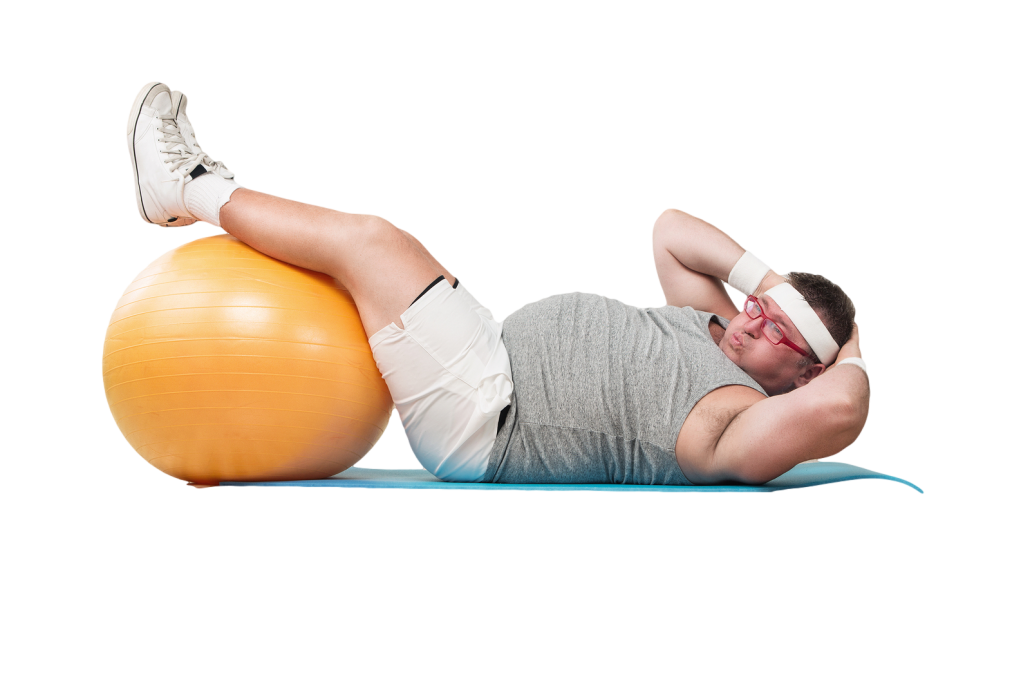Sporting a lean, defined midsection has become one of the major status symbols of being fit and healthy. For this reason, the internet is chock-full of information on just how to achieve that desired “Six-pack” that so many of us are desperately seeking.
And while many of the recommendations use various exercises, machines or devices that strictly target the abdominal region, to “supposedly” stimulate your abs and burn belly fat, do they really work as promised?
The Abdominal Regions Job
Our abdominal regions job is to stabilize our core. These muscles also assist in our breathing, allow movement and mobility, protect our internal organs and together with the back muscles, provide postural support and balance.
Here are the four main abdominal muscles:
Therefore, maintaining strong abdominal muscles is shown to improve posture, balance and flexibility, while reducing the possibility of back pain and injury. (1, 2, 3, 4)
Belly Fat Types
As many of you may already know, excess belly fat has been associated with a higher risk of metabolic abnormalities including, metabolic syndrome, insulin resistance, type 2 diabetes, and heart disease. (5, 6, 7)
But, just as many of us lump all dietary fats into the same category, we seem to do the same with belly fat as well. However, what many don’t realize is, not all belly fat is created equal and there are actually two types — Subcutaneous and Visceral.
Subcutaneous fat is the type of fat that is located directly under the skin making us look big and fluffy. This type of fat you can actually pinch and measure with an apparatus called a “body fat caliper” seeing how it sits between your skin and muscle.
However, subcutaneous fat is not directly tied to metabolic risk factors. Therefore, carrying this type of fat, in moderate amounts, will “theoretically” not increase cardio-metabolic risk factors, including insulin resistance, diabetes, hypertension, and dyslipidemia. (8, 9)
Visceral Fat on the other hand, is the type of fat located directly in the abdominal cavity and surrounds our vital internal organs. This type of fat is directly linked to a host of chronic health conditions, such as high blood pressure, high triglycerides, high cholesterol, type 2 diabetes, and heart disease. (10, 11)
In fact, research suggests that visceral fat is biologically active. In essence, what this means is, it releases various compounds, producing hormonal imbalances that can highly influence several disease-related processes in the human body. (12)
Ab Exercises and Belly Fat Reduction
When present in even modest amounts, subcutaneous fat (the fat directly under the skin) will prevent you from seeing your abdominal muscles. In order to have defined abs or a “six pack” you simply need to get rid of this subcutaneous fat from your abdominal area.
So, what many of us do, because it seems logical, not to mention we’re mass marketed on this idea, is we do multiple exercises that specifically target our abs, in the hopes of getting rid of our belly fat.
This concept is called “spot reduction” which plays on the premise that fat can be reduced in a specifically targeted area of the body through exercise, such as exercising the abdominal muscles in an effort to rid fat around the mid-section. (13)
However, while it’s undisputable that exercising your abdominal muscles will strengthen your mid-section the evidence clearly points out that targeted ab exercises for the sole purpose of burning belly fat is highly ineffective.
Therefore, doing multiple sets of crunches, side bends, sit-up or twist will not burn away your unwanted belly fat and make your abs visible. Equally, this false idea doesn’t only apply to the abdominal area, but to all areas of your body.
In fact, in a study done with 104 subjects (45 men, 59 women) to examine the effect of exercise-induced localized fat loss, they compared subcutaneous fat measurements before and after a supervised, upper-body targeted, resistance training program.
After the subjects had completed this 12 weeks program, only using their non-dominant arm, they measured subcutaneous fat before and after the program and found that participants lost fat throughout their entire bodies, not just in their trained arms. (14)
In yet another study testing the effects of a 27 day sit-up program found that neither fat cell size nor subcutaneous belly fat had decreased. (15)
And multiple other studies have shown similar results. (16, 17, 18, 19)
The Misconception behind Targeted Fat Loss
One reason why targeted fat loss is such a misunderstood concept is due to the actual physiology behind it. Although muscle is the physical location where calories and fat are burned for energy, muscle cells cannot use the fat contained in fat cells directly.
Body fat must first be broken down before it can enter the bloodstream. And because fat is accumulated in layers throughout the entire body, it is also reduced in layers, thereby, burned from all areas of the body, and not just from the body part being exercised.
What Exercises Work Best
Regular, whole-body exercises will speed up your metabolism helping to burn unwanted body fat. However, intensity plays a role as well. Moderate to high-intensity exercise has been proven to reduce fat mass, compared to low-intensity exercise. (20, 21)
Consistency with your exercise regimen also significantly impacts results. For example, doing moderate-intensity cardio for 30 minutes, five days a week, or high-intensity cardio for 20 minutes, three days a week has been shown favorable. (22)
Additionally, changing your body composition (building more muscle) directly impacts the promotion of fat loss. In other words, the more muscle mass you build, the more fat you will burn automatically. (23)
High Intensity Interval Training (HIIT), which happens to be one of my go-to methods of choice, is another approach that has been proven to reduce body fat more efficiently than standard aerobic exercise. (24, 25)
HIIT is a type of interval training that combines short bouts of high-intensity weight training followed by slightly longer but less intense recovery periods. Additionally, by combining resistance training and aerobic exercise together has been shown to be more effective than aerobic exercise alone. (26, 27, 28)
How to Lose Belly Fat Effectively
The evidence clearly points out that targeted exercise is highly ineffective for even modestly reducing fat in a specifically targeted area of the body.
So…what’s the answer?
Maybe you’ve heard the saying, “Abs are strengthened in the gym but made visible in the kitchen”
Well nothing could be closer to the truth, as good nutrition is the vital component if you want to lose belly fat and sport that “six-pack” you’ve been working so hard on.
One good first step is to reduce your intake of as much processed food as possible. Many of these foods are commonly packed with high amounts of sugar and high fructose corn syrup which are linked to weight gain and the risk of metabolic disease. (29, 30)
Instead, focus on consuming higher amounts of good quality, minimally processed protein sources. High-protein diets have been linked to greater feelings of fullness that may translate to lower calorie intake.
Studies show that protein is 25 percent more metabolically stimulating than carbohydrates and fat. Additionally, other studies have confirmed that when protein makes up 25 percent of your daily calorie intake, appetite control and feelings of fullness increased by as much as 60 percent. (31, 32)
Increasing your fiber intake is another good strategy to help reduce belly fat. Vegetables high in soluble fiber have been shown to greatly impact weight loss, especially fat loss. It also helps increase feelings of fullness and decrease over-all calorie consumption. (33, 34)
When you consume more “real” whole foods, fiber, and protein you are more likely to consume less food automatically without feeling hungry or deprived which will crucially impact weight loss and belly fat.
Bottom Line:
The absolutely best way to reduce total body fat and get your mid-section to sport that six-pack you so desperately want is by combining resistance training and cardio in addition to eating a healthy diet filled with plenty of high quality protein and soluble fiber — all of which are proven to help reduce over-all total body fat.
These methods will help you burn more calories, speed up your metabolism and make you lose body fat. This will ultimately cause belly fat loss and give you that flat, lean mid-section you so desperately desire.



